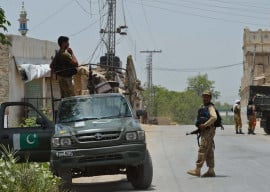
A few weeks ago, I had the opportunity to enjoy the hospitality of a dear friend in Chitral. Until its division into two parts in 2018, it used to be the largest district in Khyber-Pakhtunkhwa (K-P), covering an area of 14,850sqkms.
With a population of around 0.51 million, Chitral is mainly connected to the rest of Pakistan through the Lowari Pass. Originally conceived in 1956, it took two decades for the Lowari tunnel’s foundation stone to be laid in 1975. The project was soon stopped due to a shortage of funds. It resumed almost three decades later in 2005 and was commissioned in 2017. Thus, the realisation of the concept took six decades despite reducing the 14-hour drive from Chitral to Peshawar to half, which used to be halted in winters.
Chitral shares borders with Dir, Swat, Afghanistan, and Gilgit, connected to China. Regarding terrain and topography, it has altitudes ranging from 1,094 to 7,726 m. Twenty-four percent of its area is covered by mountains and glaciers, with only 3% cultivable land. As the ever-increasing population (annual growth rate: ~2.4%) uses it for firewood and construction, the forest cover is depleting fast. It currently stands at 4% and is projected to be 3% by 2030.
Its more than 150 mini hydropower plants have proven to be a major source of power over the past three decades. As there is no central buyer like CPPA that normalises the generation costs and losses of various modes and regions; therefore, the unit rates of supplies remain ~10 times cheaper vis-a-vis the rest of the country. However, the current effective capacity seems to be less than 10MW against the requirement of 40MW; although the hydel-power potential of Chitral is ~5,000 MW.
Chitral remains perennially exposed to the risks of flash floods, avalanches, and landslides. The gradual rise in the ambient caused by global warming and resultant accelerated melting of the glaciers has increased the risks. The floods in 2010, 2013, and 2015 caused by glacial lake outburst flood (GLOF) are a few examples. They impacted 69% of the population in 2015 alone along with washing away the power station at Rashun.
The literacy rate is 62% with a net enrolment rate of only 8% at the matriculation level. Also, skills and knowledge-based education as per relevant requirements are yet to take any roots. As for health, it may suffice that the maternal mortality rate is 275 per 100,000, which for the rest of the country is 154. As per credible reports, leprosy has also staged a comeback in the region, including Chitral.
Mining and tourism
Keeping in view its unique geographical setting, Chitral can be developed into a major global epicentre of mining and minerals, trade, and tourism. As for the current status, nothing explains it better than the fact that its GDP observed a major erosion from Rs6.5 billion in 2005-6 to Rs4.6 billion by 2019-20.
The K-P’s Ministry of Mining has placed on its website a dedicated information package, amply highlighting that the valley is a trove of minerals. It tells us about the results of the potential assessed in three phases with the first one started in 1953 by a German group for iron ore. Later, a more wide-scale campaign led by an Austrian company was conducted during 1974-78 followed by another one in 1992-95.
Read Markhor population in Pakistan witnesses significant increase
As a result of the given studies, some of the identified minerals and gemstones are: Chromite, Granite, Marble, Serpentine, Hematite, Aquamarine, Tourmaline, Garnet, Emerald, Copper, Gold, Iron ore, Lead, antimony, tin, silver, vanadium, arsenic, mercury, tungsten, silver, cadmium, barium, nickel, platinum, and molybdenum.
Despite the above potential, the pertaining industry is severely handicapped by a shortage of required human capital, including skilled staff, rudimentary methods of mining predominated by blasting and undue wastage of 85%, absence of a scientific approach and planning, and lack of funds. Similarly, not only are the much-needed technology partners totally missing, but also the corporate sector, which could help in developing credible value addition-based supply chains. This gets further complicated due to weak and ill-equipped regulatory control. What caps all the challenges is the combination of the difficult terrain and dearth of corresponding communication infrastructure. There are fewer than 200kms of black-topped roads in Chitral. All three major routes, i.e., Lowari-Chitral, Booni, and Garam Chashma, can hardly qualify as roads. Chitral-Bumburit route is also not much different. Most of the routes in the mountains, which are even barely jeep-able, have unsafe widths and altitudinal variations; thus, littered with death traps and absolutely unfit to sustainably support any sustained commercial activity. The evident load-bearing capacity limitations of the existing bridges, which also frequently collapse, further aggravate the situation.
The ongoing climate change is a major factor to be reckoned with. Out of the 7,000 known glaciers in Pakistan, 543 are located in Chitral. Thus, the entire area is at risk of the Glacial Lake Outburst Floods (GLOFs). Only a few examples are as follows: a) On July 26, 2010, a huge GLOF originating from the glacier in Booni Zom struck the village Booni destroying whatever came in its way along with the associated bridge and the road. b) Two other villages were similarly destroyed in 2005 and 2007. c) Only last year in June several ravines in Chitral were flooded damaging a number of link roads and connecting bridges.
Regarding safety, there have been three Chitral-related air accidents alone. The latest occurred on December 7, 2016 when an aircraft enroute from Chitral to Islamabad crashed near Havelian. Later investigations identified multiple faults in the plane. Earlier in 2004 a plane upon landing at the airport overran the tarmac resulting in its damage beyond repair. Before that in 1965 a plane enroute from Peshawar to Chitral had crashed into Lowari pass. The other regional reference, i.e., Gilgit, with five accidents, including three fatal ones in mid-air, presents a more alarming status.
What is to be done
All aspirations about Chitral’s development may only remain dreams until the following steps are undertaken. 1) We find NGOs proliferating in Chitral, making one feel as if the state has tacitly abandoned its responsibility. This needs to change. 2) Keeping in view its extensive border with Afghanistan, commercial synergies with them need to be considered proactively. 3) There is negligible chance of success for any major mining and tourism efforts unless coupled with large-scale development of required communication infrastructure, human capital’s capacity building, and arrangement of relevant technology partners and dedicated funding institutions. 4) In order to take and implement informed decisions, an institution of world-class engineers, developers, and mining, climate, and safety experts needs to be constituted. 5) Introduction of climate emergency is essential coupled with the gradual replacement of wood for cooking & heating by alternates like hydel and wind-based energy, bio-methane and bio-LNG, LPG Air mix, and briquettes made from dried leaves and coal.
THE WRITER IS A PETROLEUM ENGINEER AND AN OIL AND GAS MANAGEMENT PROFESSIONAL
Published in The Express Tribune, November 20th, 2023.
Like Business on Facebook, follow @TribuneBiz on Twitter to stay informed and join in the conversation




1732259077-0/carti-(1)1732259077-0-165x106.webp)
















COMMENTS
Comments are moderated and generally will be posted if they are on-topic and not abusive.
For more information, please see our Comments FAQ